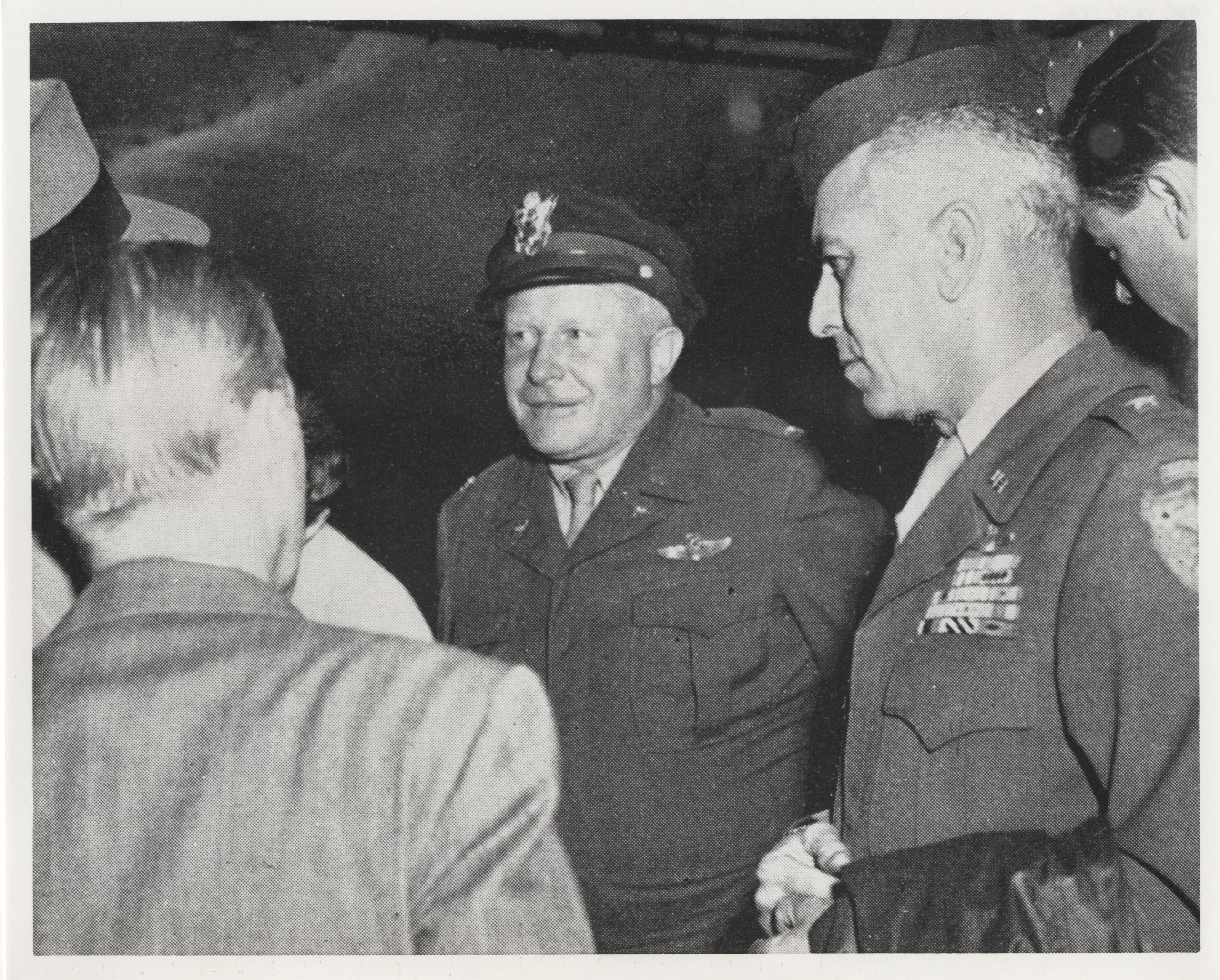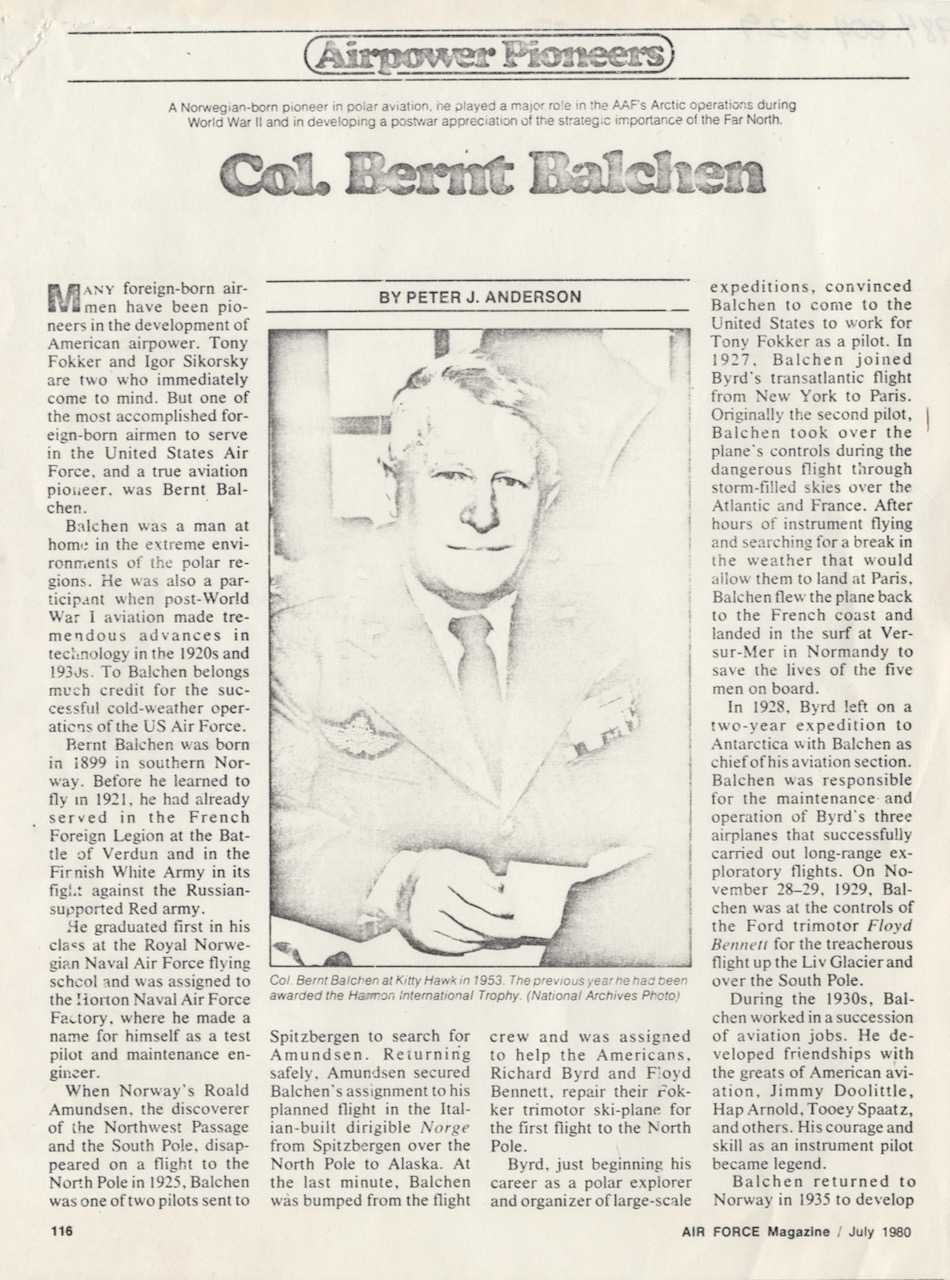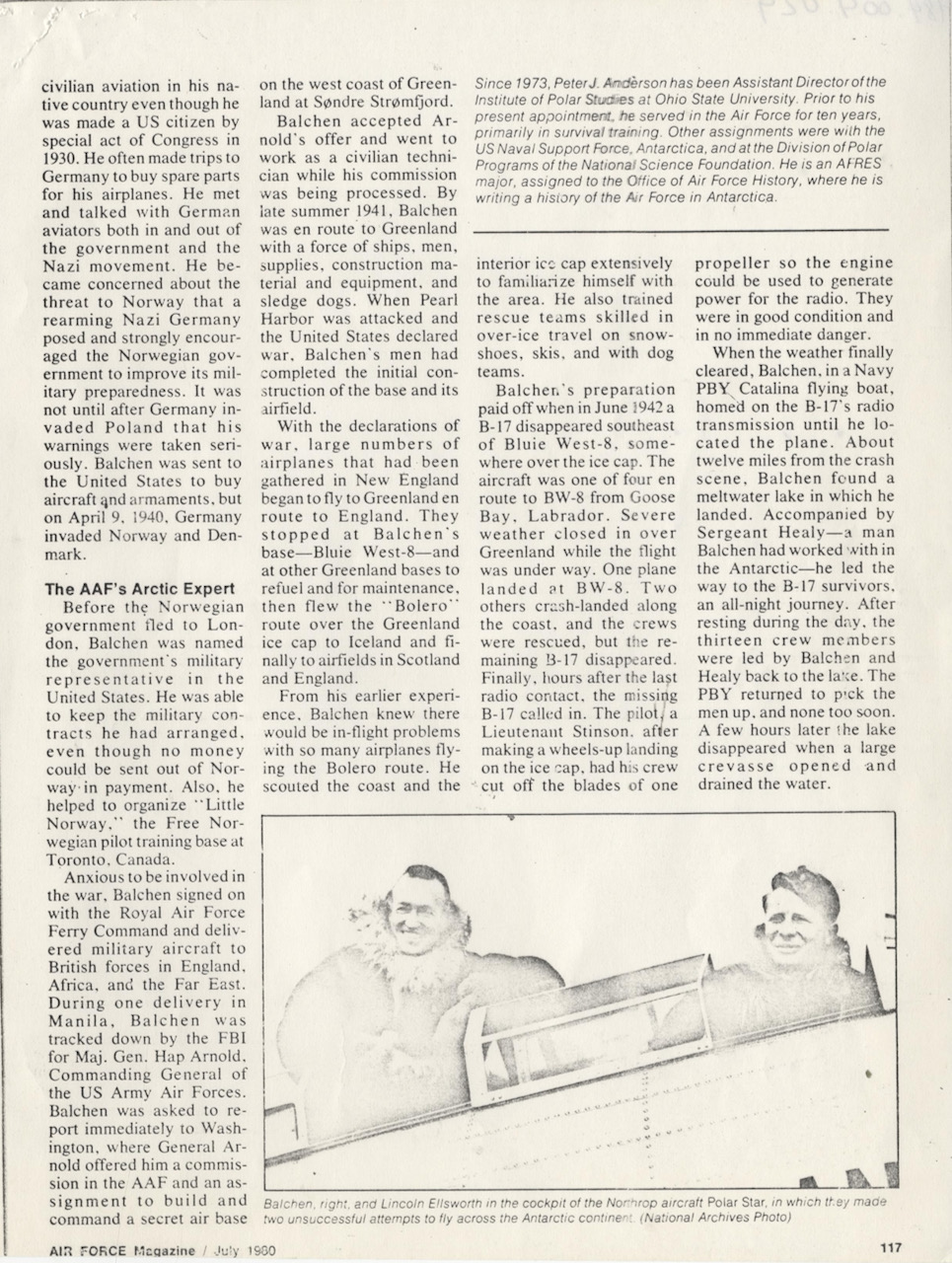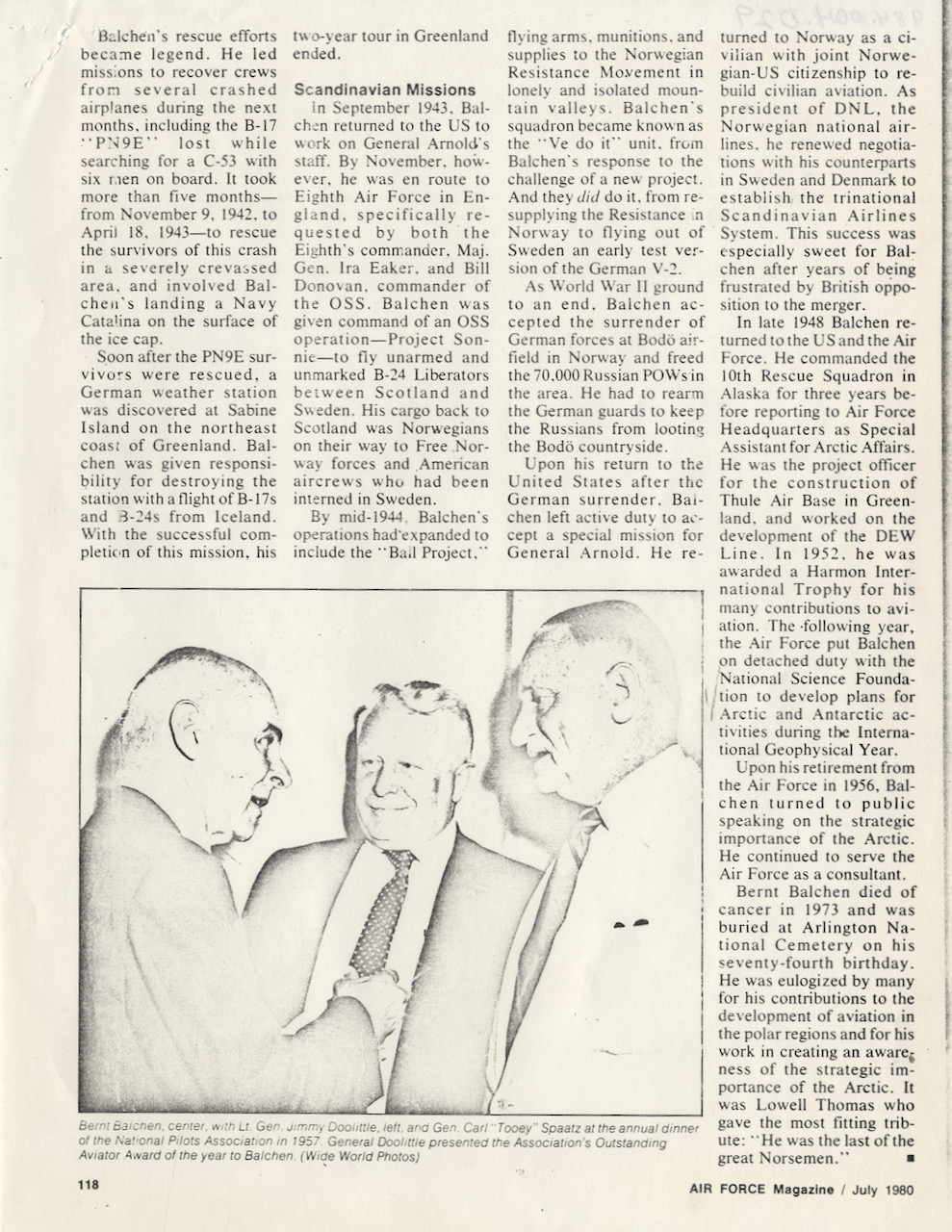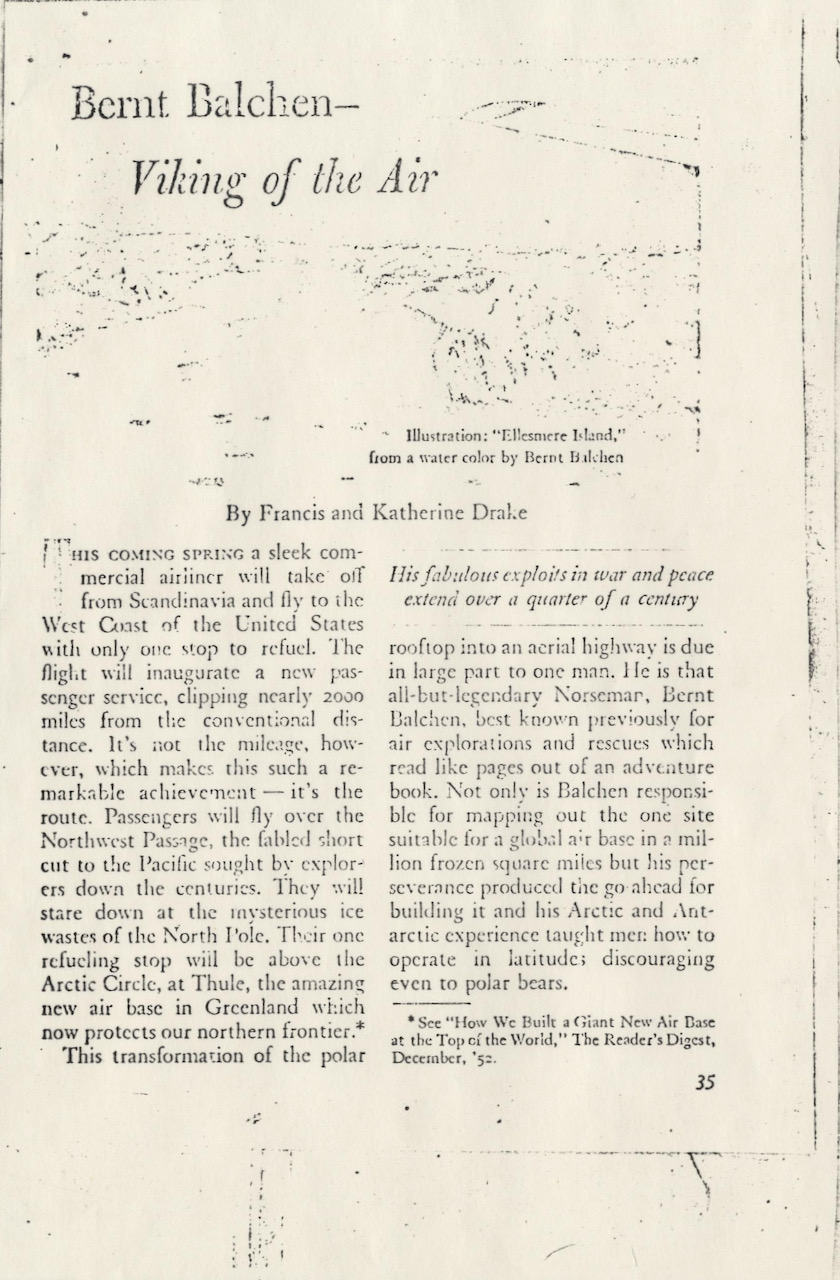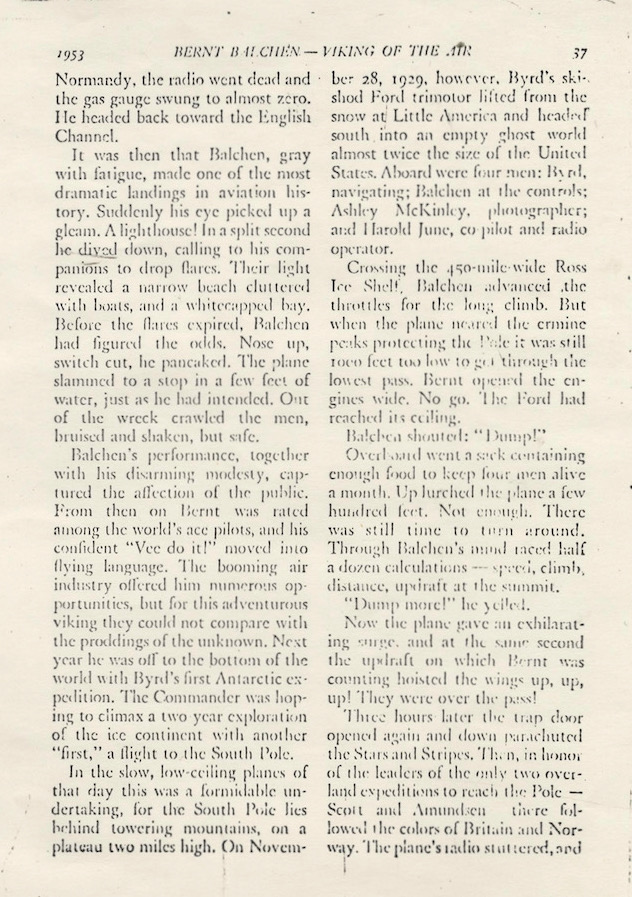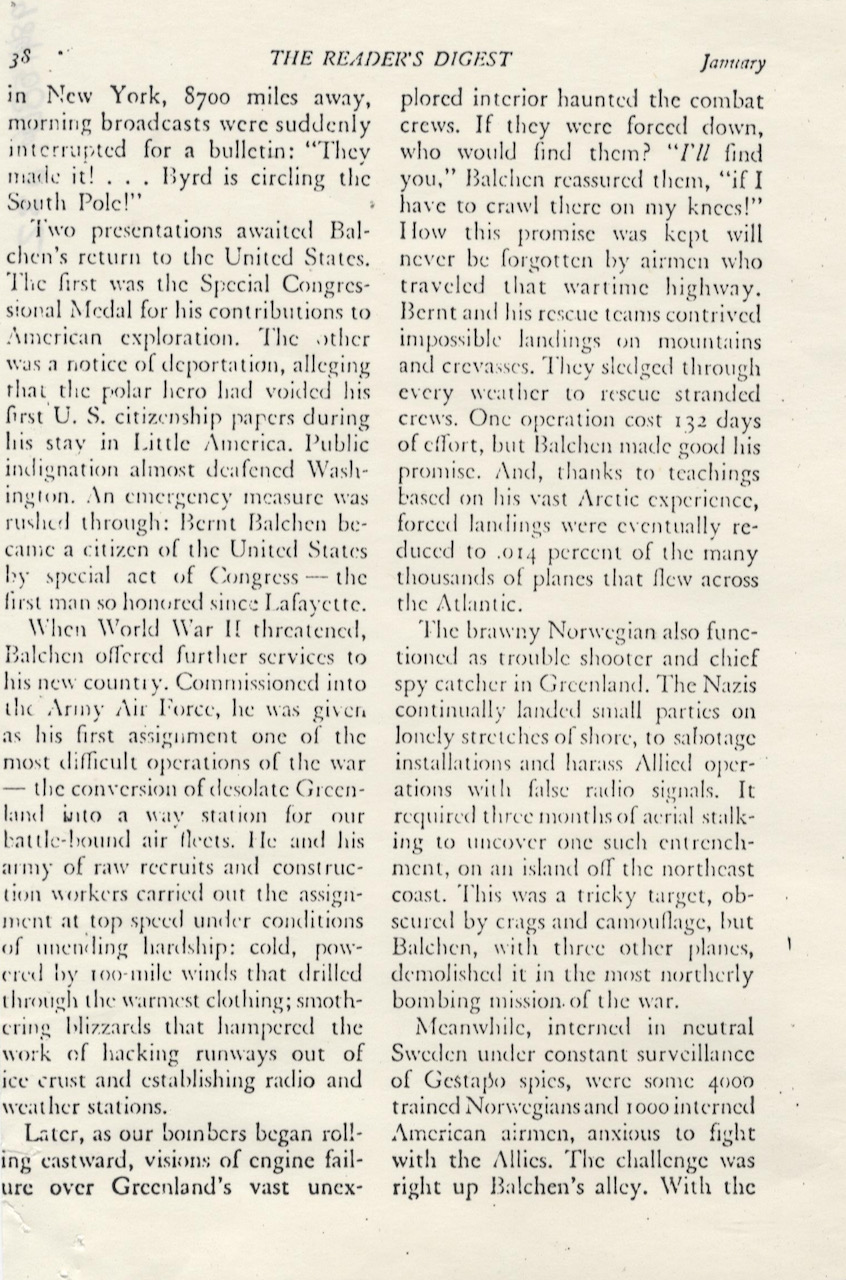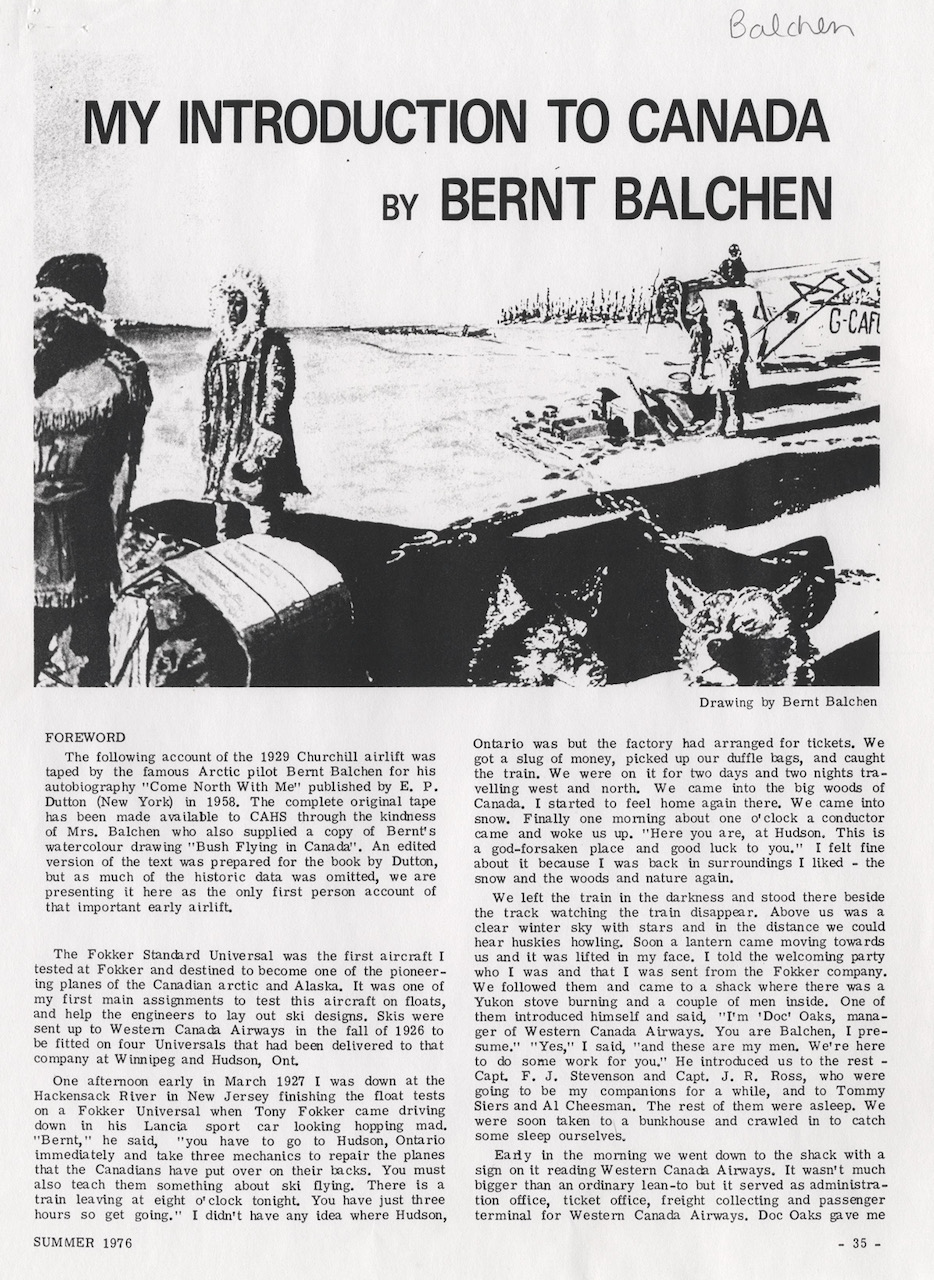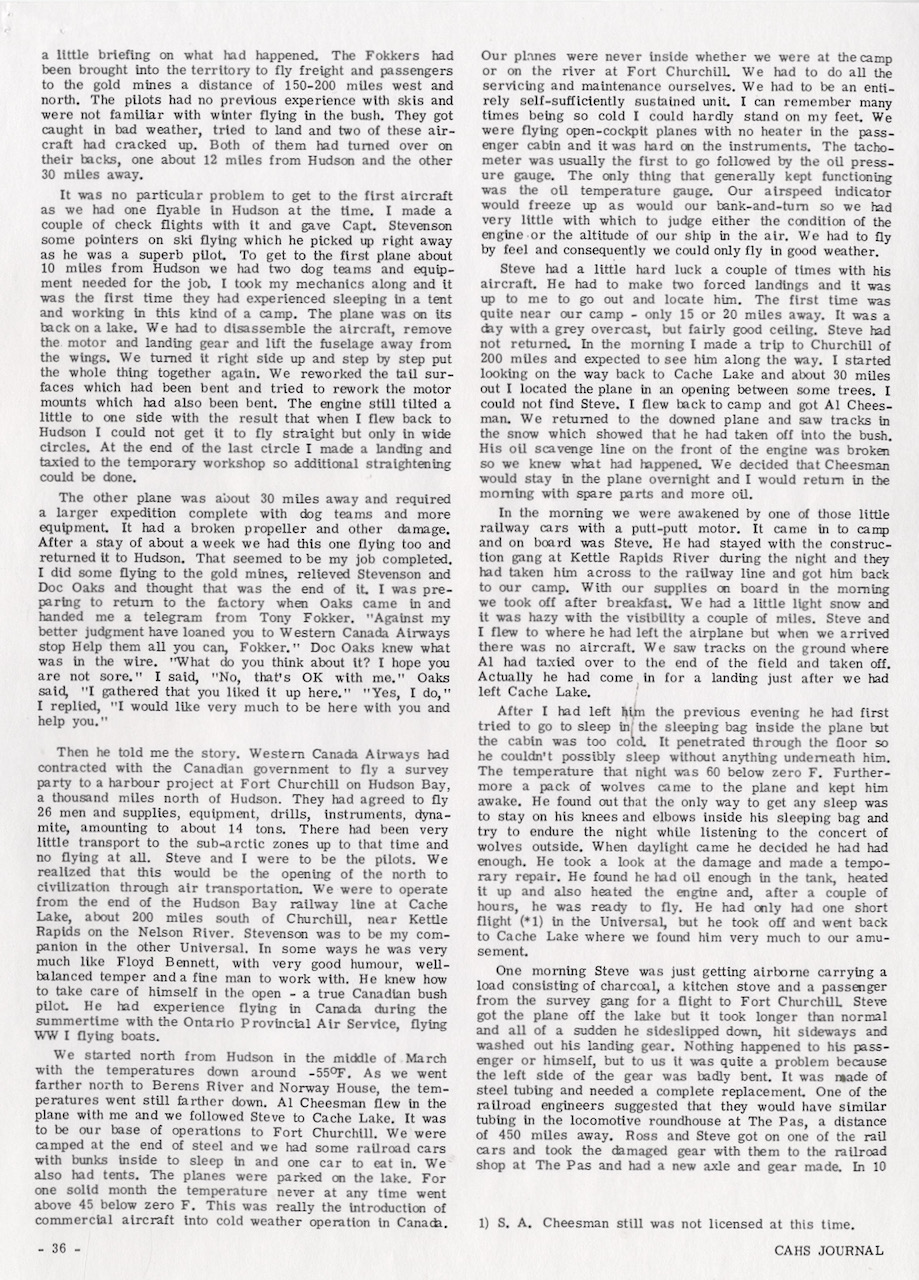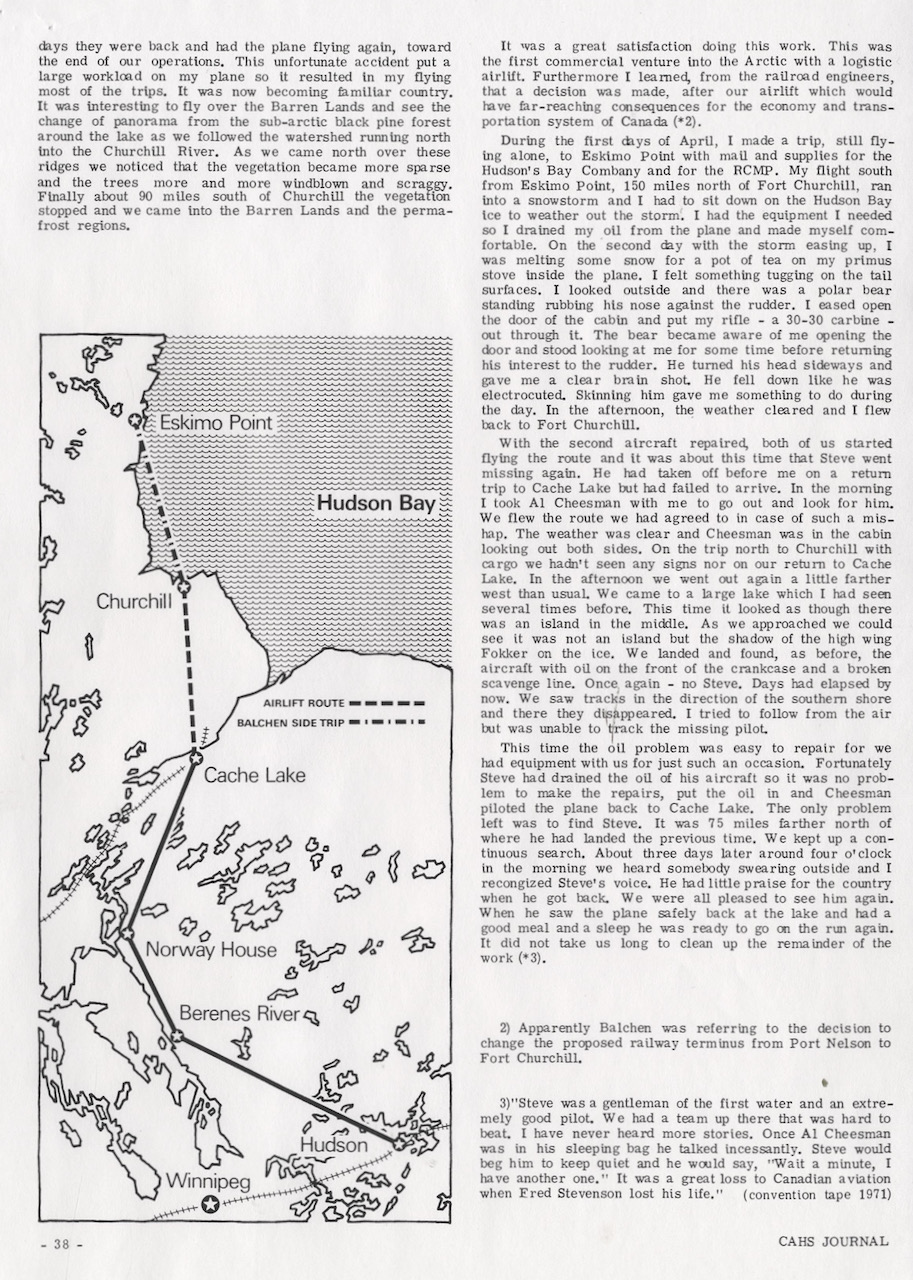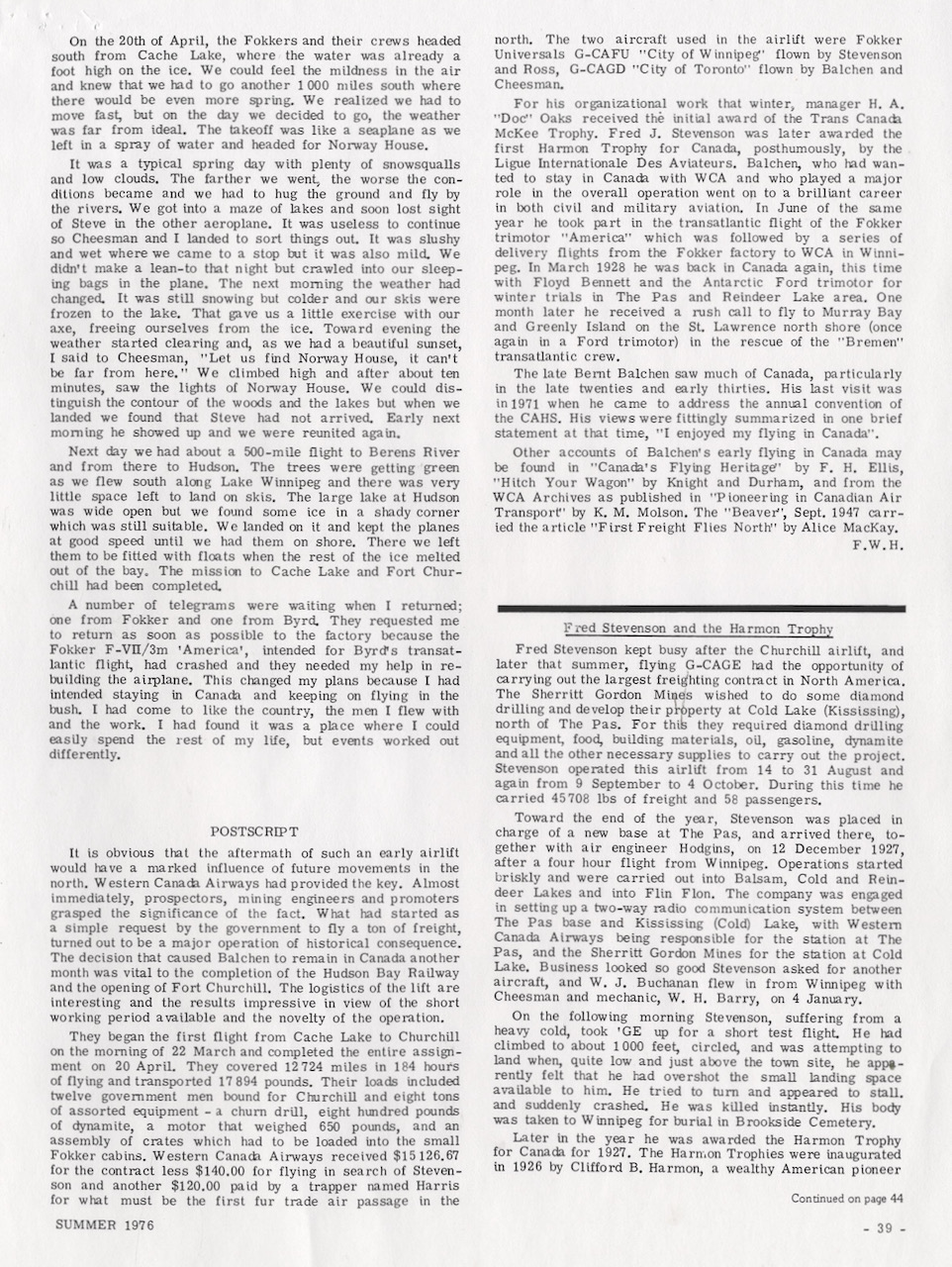Bernt Balchen
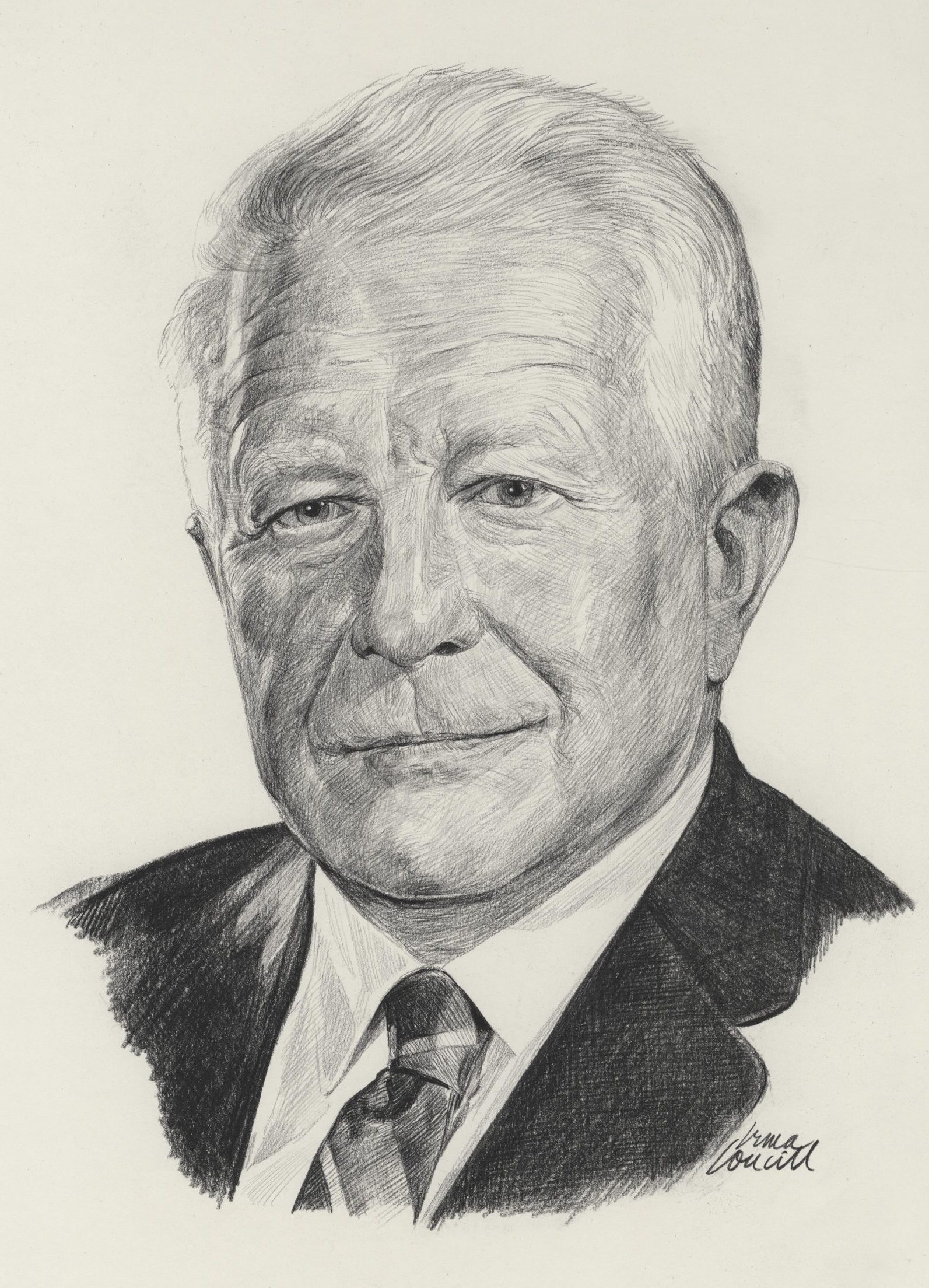
Birth Date: October 23, 1899
Birth Place: Tveit, Norway
Death Date: October 17, 1973
Year Inducted: 1974
Awards: DSM; DFC; DSM (USA); Legion of Merit (USA); DFC (USA); Soldier's Medal (USA); Air Medal (USA); DSc (Hon); The Harmon International Trophy
His extraordinary aeronautical abilities, directed towards the exploration of unmapped regions, the Fort Churchill air lift and the linking of this nation by air to Scandinavia, despite adversity, have been of outstanding benefit to Canadian aviation
Time in Norway
Bernt Balchen was born in Tveit, Norway, on October 23, 1899. He was educated at the Norwegian Army Officer Training School, the Forestry Engineering School of Norway, and the Advanced Forestry Engineering School of Sweden. In 1918, he volunteered for ski patrols and the cavalry with the White Army in Finland. He graduated from the Royal Norwegian Naval Air Force Military School, and received his Pilot's Licence in 1921.
In 1926 Balchen was seconded by the Government of Norway as pilot/engineer to accompany explorer Roald Amundsen's flight over the North Pole, using a dirigible based at Spitsbergen. At the same time, American explorer Richard E Byrd was planning to fly from Spitsbergen to the North Pole. Balchen was directed by Amundsen to repair the damaged skis on Byrd's Fokker Tri-motor, this enabling Byrd to be the first to fly across the North Pole.
A Challenging Adventure with Western Canada Airways
In 1927, Balchen was hired by Fokker Aircraft Corporation in the United States as chief test pilot. He was assigned to Western Canada Airways at Hudson, Ontario, to teach Canadian pilots how to handle ski-equipped planes.
At this time, the Hudson Bay Railway Co. wanted to complete its railway line from its northern end at Cache Lake, Manitoba, to an outlet on the Hudson Bay, but the best site for the terminus had not been determined. Engineers were needed to carry out critical geological tests to decide whether the railway should end at Churchill, or at an alternate site at Port Nelson. These tests had to be accomplished within a prescribed period of time so that rail crews at Cached Lake could start work on the railway in the spring.
In 1928, Western Canadian Airways, under the management of Harold 'Doc' Oaks, was awarded a specific government contract to transport men, drilling equipment, explosives, and supplies from Cache Lake to Fort Churchill, a distance of about 200 miles (320 km). As one of two pilots selected for the project, Balchen flew an open cockpit Fokker aircraft during six weeks of savage winter weather across inhospitable terrain. He and his crew faced aircraft breakdowns, forced landings, frostbite, and exhaustion to successfully complete the undertaking. The experiences at Hudson and Churchill prepared them for future flights in the sub-arctic and beyond.
Investigations made by the engineers proved that a railroad could be built to Churchill. It was subsequently chosen as the ocean terminus for the Hudson Bay Railway. In paying tribute to the importance of the operation, the Government of Canada stated: ". . . there has been no more brilliant operation in the history of commercial aviation."
The Churchill airlift operation was the first of its size in Canada's sub-arctic and marked the beginning of large scale bush flying in Canada. The flights established once and for all the importance of the airplane to the development of these regions.
In High Demand
Balchen's experience and skill as a pilot, engineer and explorer was in great demand. Admiral Richard Byrd, of the United States Navy, hired him as co-pilot on a flight across the Atlantic Ocean from New York to Paris. In 1928, he piloted one of three relief planes to the crash site of the German aircraft Bremen, on Greenly Island, off the southern coast of Labrador. The following year he piloted Admiral Byrd across the South Pole, the first such flight ever made. Balchen has previously carried out cold-weather testing of Byrd's Ford Tri-Motor aircraft in Manitoba, where he had designed its skis.
In 1930 the Congress of the United States created him a citizen by special act, and awarded him a distinct medal. The following year he redesigned the aircraft Amelia Earhart used in her successful flight across the Atlantic Ocean. He was named Chief Pilot of the Lincoln Ellsworth Antarctic Expedition in 1933, and for the second time Balchen flew across the South Pole. In 1940 Balchen established Little Norway at Toronto, Ontario, as the training base for Norwegian pilots in exile.
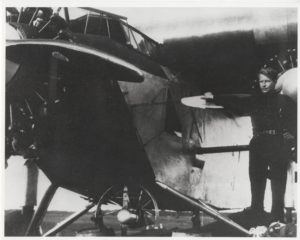
Bernt Balchen with the America, Commander Byrd's tri-motor Fokker, at Roosevelt Field, New York before the trans-Atlantic flight in 1927.

Bernt Balchen and Amelia Earhart in Newfoundland just before her takeoff solo across the Atlantic on May 20, 1932. Balchen had modified and tuned her Lockheed Vega at the Fokker factory in NJ and flown her from there up to Newfoundland. The next day she landed in Ireland, the first woman ever to solo the Atlantic.
Task Force Eight
Balchen was named Commander of Task Force Eight, and his job was to construct the world's most northern air base, on the west coast of Greenland, north of the Arctic Circle. By 1943 he had completed, and made operational, Sondre Strom Air Base, another link in the Allied Staging Route across the North Atlantic Ocean. When an American bomber crash-landed on a remote Greenland glacier, Balchen personally led what has been called by the United States Air Force (USAF) "one of the greatest of Arctic sagas". Before it was over, six months later, five rescuers had perished, he had made three flying boat landings on the sloping ice-mass, and once had to walk fifteen days across the ice-cap to the safety of a satellite base.
Scandinavian Airlines System (SAS)
As one of the chief architects of the tri-national Scandinavian Airlines System (SAS) in the early 1940's, Balchen envisioned a commercial air route linking Scandinavia with Canada, using a direct route across the North Pole, this shortening the flying distance between the countries. As President of SAS in 1946, he helped design the navigational requirements to make such flights possible, then flew the route fifteen times to ensure its feasibility and safety. Balchen thus became the first pilot to fly across both North and South Poles.
Awards and Recognition
During his career with USAF he worked on all phases of Arctic operations and commanded the first non-stop flight from Fairbanks, Alaska, to Oslo, Norway, in 1949. In 1952, Balchen was awarded the Harmon International Trophy for his significant contributions to polar flight.
Balchen logged 20,000 command hours as pilot of numerous aircraft types and was awarded the United States' Distinguished Service Medal, Legion of Merit, Distinguished Flying Cross, Soldier's Medal, and the Air Medal. He also received decorations from Norway, Sweden and Denmark for his extraordinary achievements. He was honoured with honorary Doctorate Degrees from Tufts University in Massachusetts and the University of Alaska.
Bernt Balchen passed away in New York City on October 17, 1973. He is buried at Arlington National Ceremony in Virginia next to the grace of Richard E Byrd.
Bernt Balchen was inducted as a Member of Canada's Aviation Hall of Fame in 1974 at a ceremony held in Edmonton, Alberta.
New Stories
To return to the Inductee Page, please click here.

